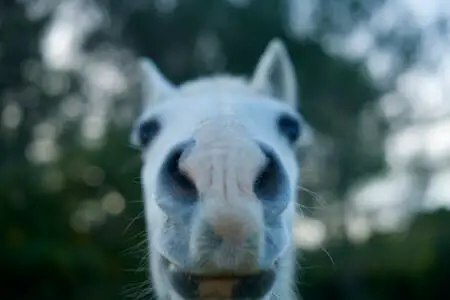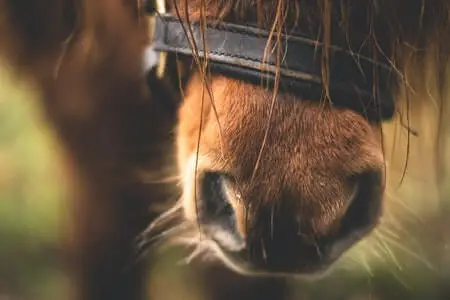If you’re a pet owner, you may be curious about how horsehair is harvested. It’s a process that involves collecting the hair from the horse’s mane and tail.
The horsehair is then cleaned and sorted before it’s sold to manufacturers. Horsehair has a variety of uses, including making brushes, mattresses, and insulation.
The harvesting process begins by combing through the mane and tail of the horse to remove any knots or tangles. Then, the hair is cut as close to the scalp as possible. It is then bundled into small locks and sold to hairdressers, beauty supply stores, and other buyers.

The horsehair is then sorted and washed. It can be bleached to create a more uniform color, or left in its natural shade. After the hair is cleaned and dried, manufacturers braid it into specific styles.
Are horses killed for their hair?
It’s a question that has been debated for years – are horses killed for their hair? The debate over this issue is heated, with many people asserting that horses are not killed specifically for their hair, while others claim that the horse-hair industry is cruel and harmful to animals. So what is the truth? Are horses killed for their hair?
According to a 2012 study, around 96% or 98% of hair comes from dead horses, which are killed for meat and other goods.
There are also some breeds of horses that produce almost no hair. One is the Sinta, which has a very fine coat that falls out naturally after four months. These horses are found in North America and Europe.
Why is horse hair so expensive?
The cost of horse hair varies, depending on the quality of the hair. Generally, the finer the hair, the higher its price. The reason for this is that finer hair can be used for small brushes that artists use to paint minuscule details.
Horse hair is expensive because no one animal can provide large amounts, same as with sheep. It’s also more difficult to prepare for weaving than other textiles because of this, which increases the cost of production.
Is horse hair biodegradable?
When it comes to biodegradable materials, horse hair is often overlooked. But is horse hair really biodegradable? And if so, how long does it take for horse hair to decompose?
Yes, horse hair is biodegradable. Horse hair is a great eco-friendly alternative to synthetics like nylon or plastic.
The hair from a horse was used to make the first commercial paper in the United States. Today, it is still made into a variety of products including furniture, vehicles, and various items around the home.

Horsehair has been found in cars more than 40 years old and is still in good condition. The amazing thing about horsehair is that the average time it takes for horsehair to decompose in landfills is around 1-2 months!
Are bows made of horsehair?
Many violin and bow makers prefer to use horsehair for their bows because it is stronger than most other hair types. It’s also flexible, making it easy to create a perfect shape for the bow.
Using horse hair as a material for musical instruments has been around for centuries. The oldest known horse hair bow dates back to the 9th century.
Horsehair is not just used for bows, but also for harps, violins, guitars, even piano strings. It is preferred by artists because it can produce a variety of tones and sounds that are long-lasting.
Some common brands that use horsehair in their instruments include:
- Kentucky
- Klaus Mueller
- Vega
- Sevki Oguz
- CodaBow
Tightly packed hair is more flexible and durable than loose hair. A tightly packed bow can last for decades or even centuries. Unlike synthetic materials like nylon, horsehair not only lasts longer but also produces a richer and clearer sound when used on stringed instruments.

Horsehair has been the preferred material for bows because it produces a rich tone that carries overtones and harmonics clearly. Also especially in violins, it responds beautifully to your hand movements which makes playing much easier and more pleasurable.
Even though synthetic fibers such as carbon fiber is used widely in many string instruments today since it’s much cheaper and have a richer sound, some artists still prefer to use horsehair. This is because different strokes for different folks – some feel that synthetic materials do not produce the same organic sound as a high-quality horsehair bow.
If you are an artist interested in going green, consider going old school with your instrument using horsehair. If you play piano, go for natural fiber strings. And if you play violin or cello, get yourself a good quality horsehair bow.
Final Thoughts
Horse hair is usually harvested from the mane and tail hairs of dead horses. The hair is collected by volunteers, often through donations.
After the hair is collected it’s cleaned and boiled in water with lye soap to strip away contaminants like dirt and oil.
The hair is then cut into specific measurements for use in string instruments like violins, bows, clarinets, bassoons, and harps.
